Diapause: Curated Show is part of the 2022 Being Scene exhibition, presented by Workman Arts, and currently on display at Beaver Hall Gallery (29 McCaul St) until May 31. We recommend you carve out some time to check out this powerful, affecting, and fascinating group exhibit.
Diapause, meaning dia- ‘through’ + pause (noun), describes a period of suspended development exhibited as a result of unfavourable environmental conditions. Guest Curator Oliviana Cinco invites audiences to think of this year’s curated exhibit for Being Scene as an offering for self-reflection, as we continue to re-engage with the world and find new ways of connecting with ourselves and our communities.
We connected with Asma Sultana, one of the participating artists, to find out what being part of this group show means to her, and why she uses the hair off her head to make art (we are in awe).
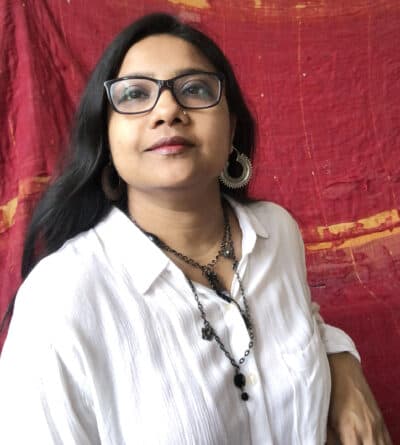
What does the word “diapause” mean to you?
Diapause means the struggling period. As we migrate from one place to another, change cultures and ways of living, and face adverse situations, and then we fight back with the resilience of an immigrant. The journey between these two points for me is very hard. I am still struggling to have a decent life and pursue my dream of becoming a full-time artist. For me, diapause is now or never-ending.
Can you briefly share with us a little about the work you are showing in this curated exhibit?
The artwork is a stylistic representation of my physical heart in pain. I have embroidered it with my hair on a cotton fabric. The chambers of the heart are stuffed with my hair to express my sufferings. I developed some heart conditions due to stress following my migration to Canada. It is my way of expressing all the pain my heart carries since I have to leave my country of birth and journey across the continents in search of a place that I can call my `Home’.
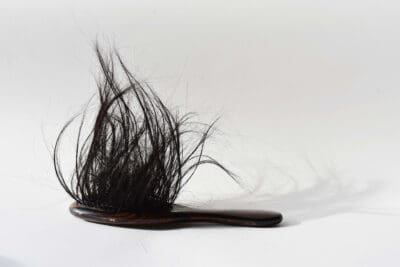
What made you want to use your own hair as part of the art work?
I use my hair as a part of my identity, my DNA. I was born in Bangladesh, where having long healthy hair is the symbol of beauty, I have strong healthy hair, which is one of the distinctive elements of my identity. Bangladesh has a culture of embroidery, since my childhood I learned embroidery from my mother. So, embroidery and hair are both parts of my upbringing and culture, I combined both of them in my art to create my own reality and depict my experiences.
What does it mean to you to be part of this group show?
It means a lot to me. Meeting my fellow artists, meeting new artists from the community knowing their amazing works and ideas. I can get to know how artists think differently and use different media to express their thoughts.
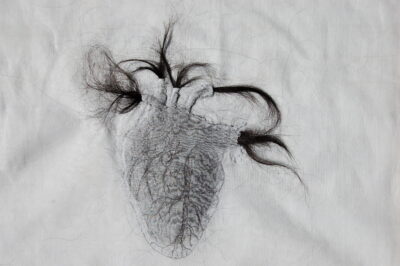
You mention that you think about art 24 hours a day. Why do you think that is? What are the greatest gifts that art gives you?
Thinking about art all the time is very spontaneous for me. I don’t want to do anything else but art. I absorb things from my daily life and think about every single thing happening around me, from my personal issues to social or global issues, anything that relates to my own life experiences, I work on that particular matter. Then I try to translate that feeling and experience into art. I try to know about what is happening in the recent art world, at the same time I love to learn about the history of art and write about it.
What philosophy is currently helping to guide your practice?
I’m trying to be mindful about the small things and events in life—and connect each to a bigger picture. Experiencing time as art. Every second of life experience is spiritual for me. Looking inside of myself is trying to learn about my own self and change of state of being and look around me in a different way and connect my existence with the whole universe.
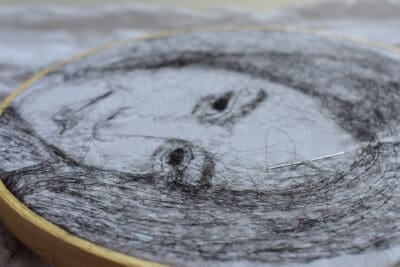
You’ve been an artist in Bangladesh, England and Canada. What are the biggest differences, in terms of your experience as an artist, in these three countries? How does the Canadian art scene differ?
Canada is a big country, things happen differently than Bangladesh and England. Many opportunities on the community level for artists can be found in Canada. In England a lot is happening in the art world. The art world is eventful, very active on an international level. Artists are brave. Whereas Bangladesh is an over-populated country with a lot of things happening on a political level. Art events are organized, artists are working but in a very traditional and local way. There is limited space for growing as an artist. There is also a pervasive lack of freedom of expression, which is harmful for the artists and creativity in general.
What is exciting you right now, as an artist? Where are you finding your greatest fulfillment?
I am working on my solo show, happening this September in Toronto. I am finding my fulfilment in time and history. I get lost in the past, the history of art. I am writing a book on Women Artists in History in Bangla, so I have to make time for that too.
Anything else you’d like to share with us? –
It is very hard living life as a visual artist. Artists need more support from every corner of society. Since they work for society or support society, they deserve more support. In this rapid-changing world, authentic artists should be supported as valuable assets to society. I am not talking about commercial art or artists. There must be a value for artistic merit.
View Asma’s portfolio on her website, and follow her on Instagram. For more information on the Diapause: Curated Show, go to the Workman Arts website.


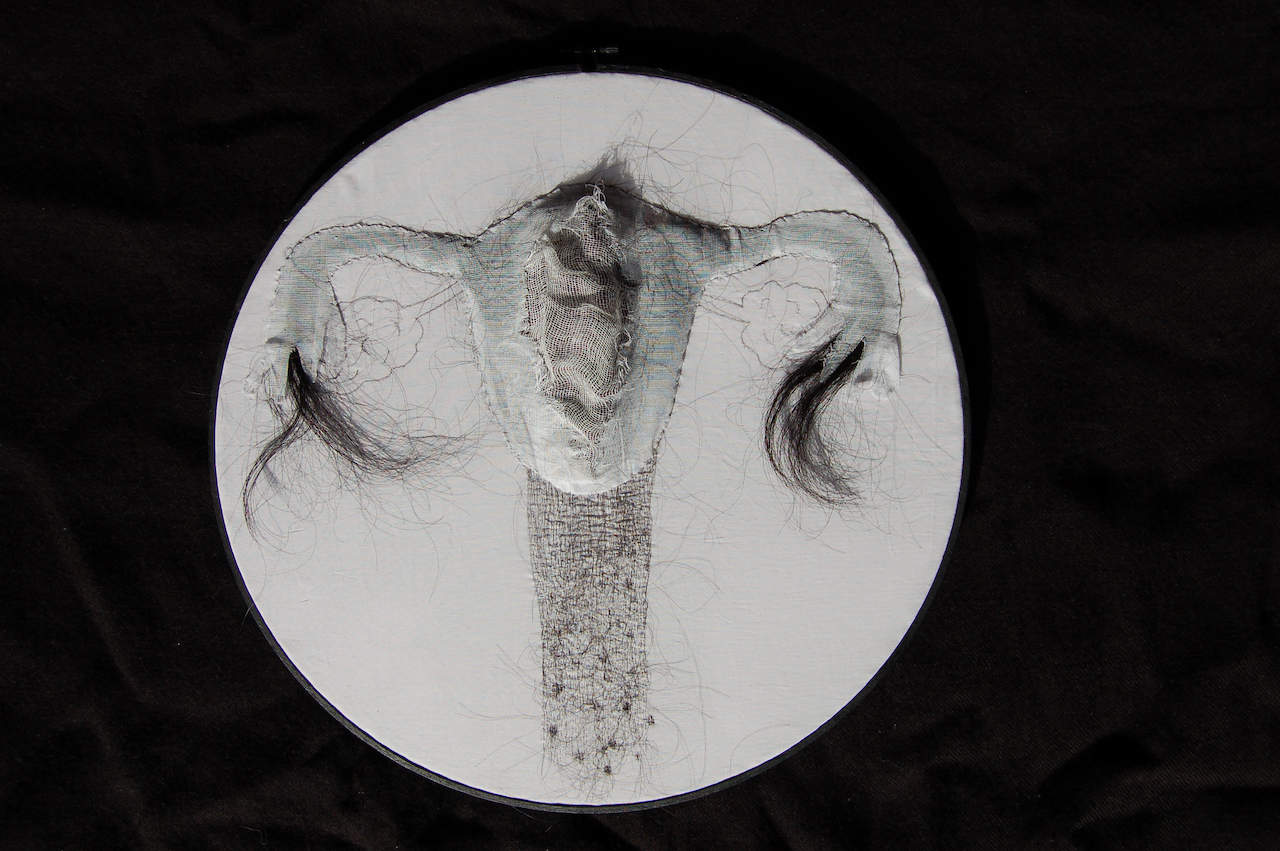

 Follow Us On Instagram
Follow Us On Instagram
